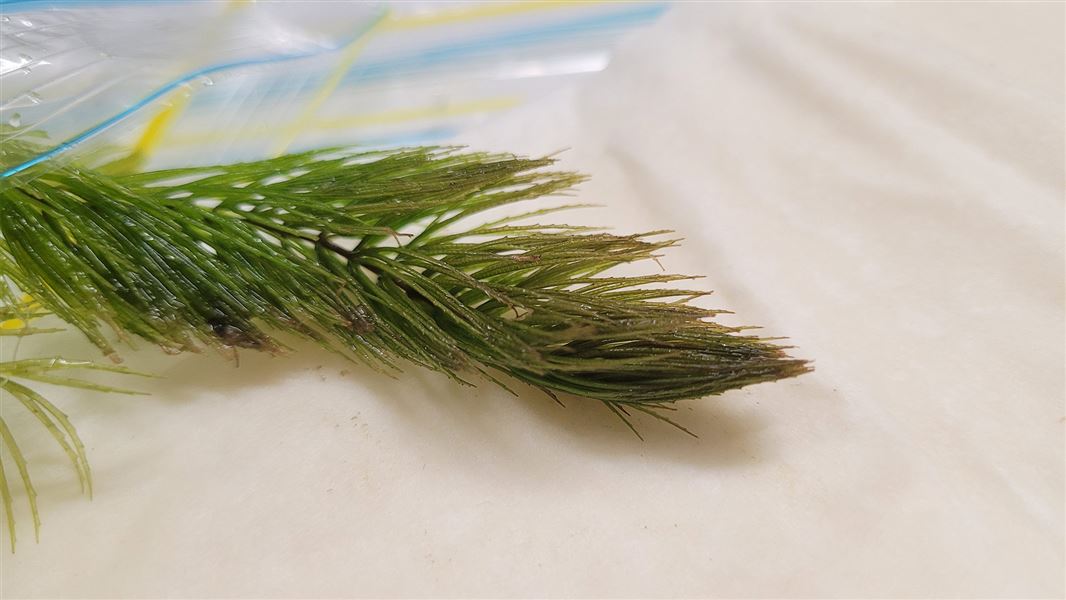Hornwort is native to North America and was first recorded in Napier in 1961.
This plant has now spread to much of the North Island and was once used in the aquarium trade for its fast-growing capabilities.
The South Island is largely free of hornwort, except for Christchurch, where it was recently re-discovered.
Hornwort is designated an Unwanted Organism under the Biosecurity Act 1993.
Description and life history
Hornwort does not have roots and can readily create rafts of growth that spread through waterbodies with ease. These rafts are often pushed by currents and/or wind into calm bays or against shorelines where they smother and shade plants that grow in these locations.
In New Zealand, hornwort does not spread via seeds, but through horn-like growths that develop from a flattish green sheet. Hornwort growth and cover tends to decrease in winter, with peak cover in autumn.
Where is it found?
Distribution
Hornwort is common throughout the North Island and is considered to dominate the vegetation in many rivers of the Waikato and Whanganui-Manawatu regions and lakes in the Bay of Plenty region.
The South Island had been declared free of hornwort for over 10 years, but hornwort was recently found in Christchurch. Report any sightings in Canterbury to Environment Canterbury.
Habitat preference
Hornwort is a submerged freshwater weed that will grow in a wide range of water bodies, from lakes to moderately flowing sections of rivers. It can grow in water up to a depth of 16 m, depending on water clarity. Hornwort will tolerate a wide range of temperature, light and nutrient levels.
Why is it bad?
There are several ways in which hornwort poses a threat to our freshwater ecosystems:
- Hornwort smothers and outcompetes native plant communities, reducing habitat availability for these native species and the native fish and invertebrates that depend on these plant communities as kōhanga/nursery sites.
- As these populations do not root themselves into the sediment, once hornwort are present in a waterway they tend to spread rapidly, making it difficult to control.
- Hornwort reduces recreational and environmental values and access of waterways.
